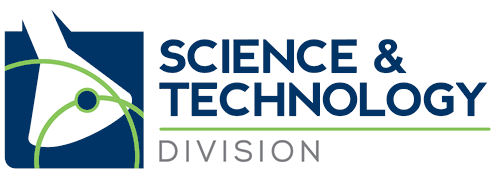1.2K
Review by Martina Burkert
At the 2015 ATA Annual Conference in Miami, the Science and Technology Division offered several excellent sessions. One of them was Matthew Schlecht’s presentation on Risk and Safety Phrases in Technical Texts.
R & S Phrases
R-phrases (short for Risk Phrases) and S-phrases (short for Safety Phrases) describe risk and safety aspects of dangerous substances and preparations in 1–13 words. They are associated with identifying letter-number codes and occur in chemical documentation like product labels, shipping manifests, MSDS/SDS/PSDS sheets, manufacturing instructions and batch records, as well as related legislation and regulations.
H &P Statements
H-statements (short for Hazard Statements) and P-statements (short for Precautionary Statements) are newer standardized phrases describing the hazards of chemical substances and mixtures and giving advice about the correct handling. With the implementation of a Globally Harmonized System of Classification and Labeling of Chemicals (GHS) R & S phrases are being replaced by H & P statements.
What translators need to know
R & S phrases as well as H & P statements are defined in the relevant regulations of different legislatures and were formulated by standardization bodies of the respective countries. Rather than attempting a literal translation, translators must use the equivalents for the target country even when they do not seem to match the source text exactly.
Translating from Japanese into English, for example, the appropriate translation for Risk Phrase No 33 (R33) is ‘Danger of cumulative effects’ while the source text could literally be translated as ‘Repeated accumulation is hazardous’.
In some cases there are significant differences between countries speaking the same language, one example being Mexico and Spain.
R & S phrases and H & P statements belong in a TM or another readily available resource file for translators working with technical (and especially chemical) texts.
However, finding the right target equivalent can be challenging. R & S phrases have developed over almost 50 years with numerous amendments, and transitioning to the H & P statements of the GHS system is an ongoing process since 2008.
Understanding the history of hazard communication can help guide translation as well as maintain awareness of future changes.
Before the EU and EU
In 1957 the European Steel Community consisting of France, the former West Germany, Italy and the Benelux Union compiled a list of commercial chemical substances and a set of phrases describing the risks and safety measures to include with packaging of these substances in four languages (DE, FR, IT, NL).
In 1967 the Dangerous Substances Directive 67/548/EEC“on the approximation of laws, regulations and administrative provisions relating to the classification, packaging and labelling of dangerous substances” was promulgated by the European Economic Community in five languages (DE, EN, FR, IT, NL).
This directive was amended numerous times, including 2001 (EU Directive 2001/59/EC) with updated standard phrases lists and a consolidated list in 11 EU languages (ES, DA, DE, EL, EN, FR, IT, NL, PT, FI, SV).
By 2006 (Directive 2006/102/EC) 22 European languages (BG, CS, DA, DE, EL, EN, ES, ET, FI, FR, HU, IT, LT, LV, MT, NL, PL, PT, RO, SK, SL, SV) were included.
The directive lists names of elements and substance classes in Annex I, some associated with a chemical hazard symbol and/or R & S phrases.
Annex II shows the respective danger symbols (pictograms), Annex III contains all risk phrases, and Annex IV all safety phrases.
UN-based System
Meanwhile nations outside the EU generated R & S phrases for their own use.
In 1992 the development of the UN-based Globally Harmonized System of Classification and Labeling of Chemicals (GHS) began with the goal of facilitating international chemical substance trade. It contains 17 physical hazard categories, 10 health hazard categories and 2 environmental hazard categories (aquatic toxicity and ozone layer). The first version was released in 2003 with updates following every two years.
In the Globally Harmonized System, the R & S phrases are replaced by Hazard Statements and Precautionary Statements (H & P statements), initially published in 6 official UN languages (AR, EN, ES, FR, RU, ZH).
UN GHS Adoption
Adoption of the GHS system is voluntary and deadlines differ by country. For the US, the final adoption date was June 1, 2015.
The European Union implemented GHS through the CLP (Classification, Labeling and Packaging) Regulation (Directive 2008/112/EC) from 2008 where some R-phrases not correlating with GHS have been added as EU-H statements. The EU CLP version was published in 24 EU languages.
Translators encountering standard phrases for the Mexican market must be especially vigilant. Since 2011 Mexico has been using the voluntary standard NMX-R-019-SCFI-2011. In October of 2015 its national implementation of the UN GHS was published, providing a transition period of three years during which current standards can continue to be used.
Resources
Matthew provided a list of valuable resources, e.g. ChemSub Online, MSDS Hyperglossary, and Keminaco.
Lists of standard phrases and links to other languages can be found in several Wikipedia articles. For the latest version of H & P statements for EU countries the CLP Regulation is a reliable source.

